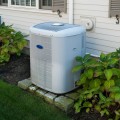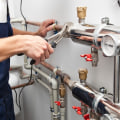Heating, ventilation, and air conditioning (HVAC) systems are essential for keeping your home comfortable. This system includes products such as ovens, air conditioners, heat pumps, as well as ducts, thermostats, and other home comfort controls. The heating unit of a split HVAC system can be electric or gas. When you turn on the heating, only the oven side of the system works to heat the house.
Alternatively, when you turn on the air conditioner, only the air conditioner unit works to cool your home. A multi-stage system is designed to help reduce energy consumption and save money. Before starting the replacement process, it is recommended to obtain up to four estimates of the costs of installing an air conditioning system from accredited HVAC contractors or companies. Replacing the ducts takes 2 to 4 days of work and it is recommended to replace the ducts at the same time as the air conditioning system.
If a heating, ventilation, and air conditioning company has a reputation for providing terrible customer service, but it offers you the lowest replacement costs, you may end up spending more in the long run (not to mention additional time, effort, and hassle). Most heating, ventilation, and air conditioning system replacements require new ducts, so homeowners will want to make sure to check with their HVAC professional to see if they need to replace the ducts. Before replacing your new air conditioning system, staff must first replace the old equipment with your new air conditioning and heating unit. Some HVAC companies offer discounts on more expensive options, such as a zone system, and many local energy companies offer discounts or rebates when upgrading or replacing an HVAC system, especially if it's an energy-saving option.
Once you've determined who you want to hire to replace your air conditioning system, determine how you'll pay for the replacement. It is a good idea for the homeowner to replace the duct network if they are going to replace the entire air conditioning system to ensure that the ducts are free of dust and allergens and to ensure that the system does not leak. If the cost of repairing the HVAC unit is 30 percent or more of the total cost of replacing it, homeowners will want to choose to replace the HVAC system. When replacing a part of the system, whether the HVAC compressor or the air controller, it is recommended that both systems be upgraded and, at a minimum, inspecting the ducts if they need to be replaced.
Some things homeowners can do to maintain a new HVAC unit after it has been installed by a professional include regularly replacing air filters; sealing any air leaks in the ducts; cleaning any debris surrounding the HVAC unit; maintaining a 2-foot clear space around the unit; replacing or adjusting the thermostat; and cleaning the evaporator coil, evaporator trap, and drain pipe with a garden hose. Taking these steps will help ensure that your new HVAC system runs efficiently and effectively for years to come.


